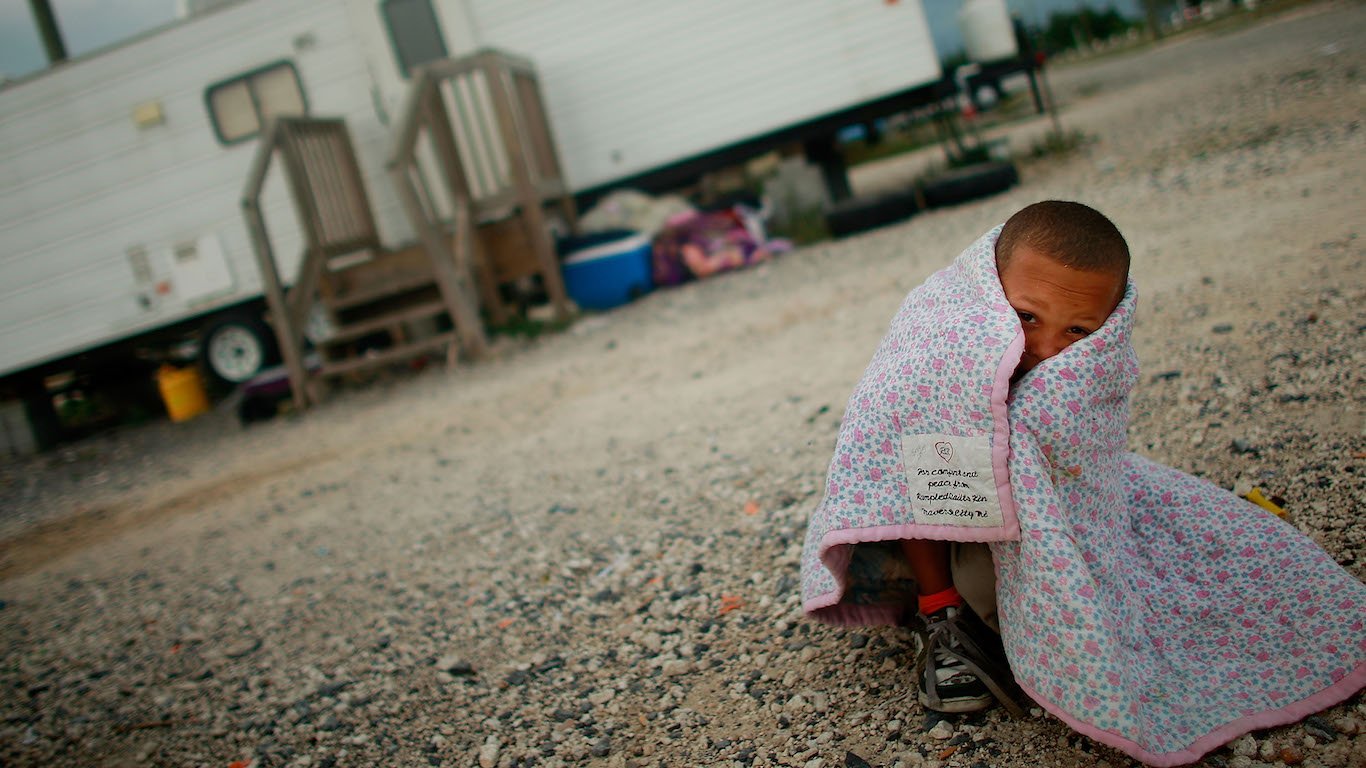

From the Council on Contemporary Families
1. Even after accounting for receipt of public benefits and programs for low-income families, 13% of U.S. children—9.7 million—are living in families with incomes below the poverty line. Without these public programs, the U.S. child poverty rate would be even higher, 19.7%.
2. Almost 40% of American children spend at least 1 year in poverty before they turn 18.
3. Most people with children at home say they worry about their ability to pay at least one bill, and nearly half have faced some kind of economic crisis during the past 12 months.
4. The vast majority of children in poverty live in households where there is at least one full-time, full-year worker (40%) or at least one part-time or part-year worker (30%).
5. Our youngest children have the highest poverty rates (nearly 1 in 5 infants, toddlers and preschoolers between the ages of 0 and 5). Very young children are the age group most likely to live in poverty in the United States; those over 65 are least likely to live in poverty.
6. Effects of poverty on brain development start early and are most severe at the youngest ages, estimated at 8-9% reductions in frontal lobe size by age 4.
7. Poverty during pregnancy is associated with elevated risk for low birth weight and infant mortality.
8. Poverty affects children’s health not only when they are young (increasing rates of asthma, obesity, injuries, functional impairment, and mental illness) but also later in their lives as adults with elevated rates of physical disability, depression, and premature death.
9. Children living in poverty have a higher rate of absenteeism or leave school altogether because they are more likely to have to work or care for family members.
10. There are proven ways to reduce child poverty – if we have the will do to it.
Several policy packages could achieve the goal of reducing child poverty by 50% in ten years. The costs of these packages are substantial ($90 to $100 billion a year) but small compared with the national costs of child poverty annually (between $800 billion and $1.1 trillion from reductions in adult productivity and increased health expenditures from growing up poor).
Sponsored: Want to Retire Early? Here’s a Great First Step
Want retirement to come a few years earlier than you’d planned? Orare you ready to retire now, but want an extra set of eyes on your finances?
Now you can speak with up to 3 financial experts in your area for FREE. By simply clicking here you can begin to match with financial professionals who can help you build your plan to retire early. And the best part? The first conversation with them is free.
Click here to match with up to 3 financial pros who would be excited to help you make financial decisions.
Thank you for reading! Have some feedback for us?
Contact the 24/7 Wall St. editorial team.



